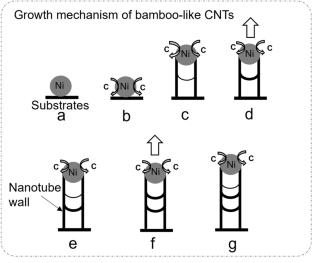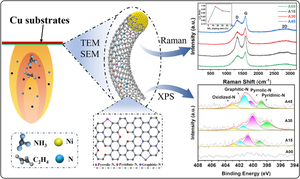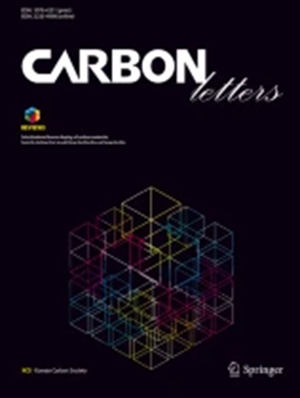Effect of NH3 addition on the preparation of nitrogen-doped carbon nanomaterials by flame synthesis method
Abstract
Nitrogen-doped carbon nanomaterials (N-CNMs) were prepared using Ni(NO3)2 as a catalyst in the laminar diffusion flame. Doping the structure of carbon nanomaterials (CNMs) with nitrogen can significantly change the characteristics of CNMs. The purpose of this research is to study the effect of adding ammonia (NH3) on the evolution of CNMs structure in the laminar flame of ethylene. Raman analysis shows that the intensity ratio (ID/IG) of the D-band and G-band of N-CNMs increases and then decreases after the addition of NH3. The intensity ratio is a maximum of 0.99, which has a good degree of disorder and defect density. The binding distribution of nitrogen was analyzed by X-ray photoelectron spectroscopy (XPS), and a correlation was found between the amount of nitrogen and the morphology of N-CNMs. Nitrogen atoms predominantly present in the forms of pyrrolic-N, pyridinic-N, graphitized-N and oxidized-N, with a doping ratio of nitrogen atoms reaching up to 2.44 at.%. This study found that smaller nickel (Ni) nanoparticles were the main catalysts for carbon nanotubes (CNTs), and their synthesis followed the ‘hollow growth mechanism’ and carbon nanofibers (CNFs) were synthesized from larger Ni nanoparticles according to the ‘solid growth mechanism’. Furthermore, a growth mechanism for the synthesis of bamboo-like CNTs using a specific particle size of the Ni catalyst is proposed. It is noteworthy that the synthesis and modulation of high-performance N-CNMs by flame method represents a simple and efficient approach.
Graphical Abstract



 求助内容:
求助内容: 应助结果提醒方式:
应助结果提醒方式:


